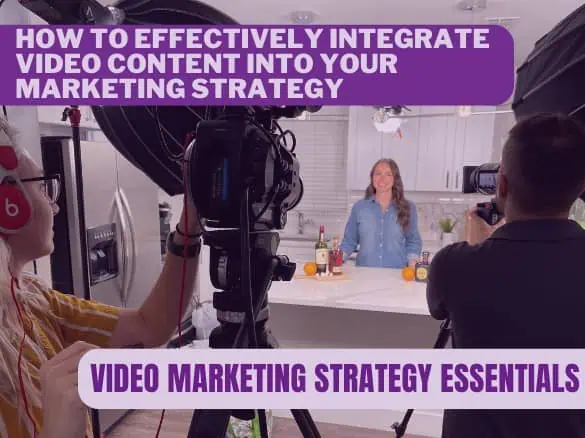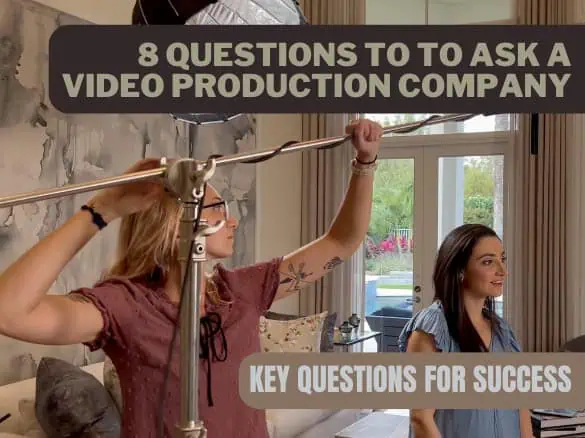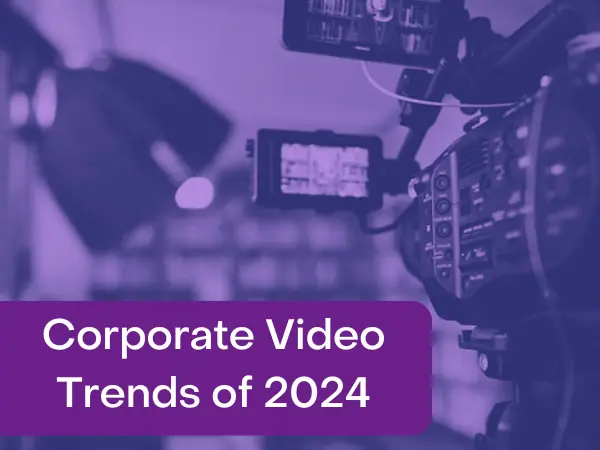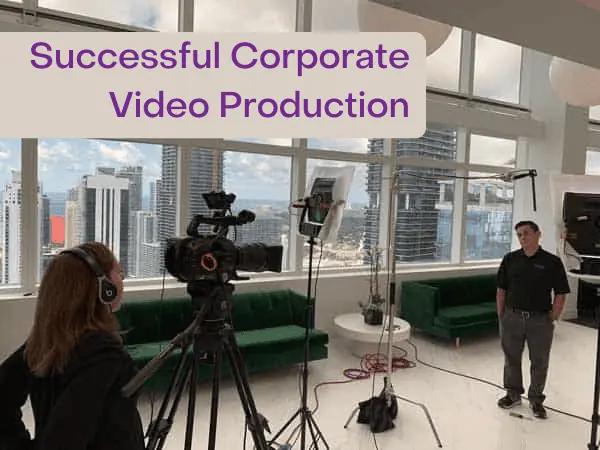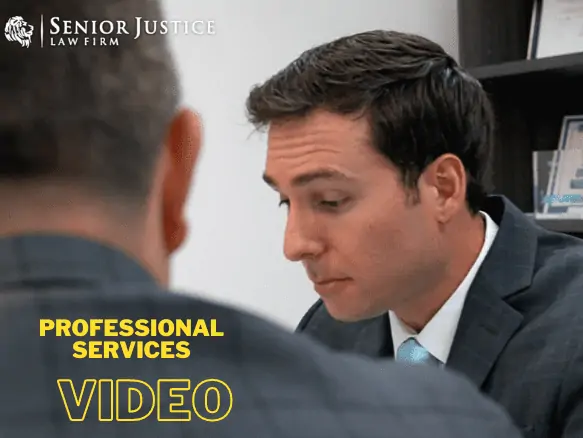Often times, digital presence is intertwined with business success and tradeshows remain a pivotal platform for direct engagement and networking. Making a highly effective tradeshow video becomes critically important. Between all the bustling aisles and countless booths, standing out becomes a challenge that many businesses face. Enter the game-changer: tradeshow videos. These dynamic tools are not just about showcasing products or services; they are a strategic medium to tell your brand’s story, evoke emotions, and engage potential clients in a crowded tradeshow environment.
The power of video content at tradeshows cannot be understated. It combines visuals, sound, and narrative to capture attention in a way that static displays or printed materials cannot. An effective tradeshow video goes beyond promotion; it creates an immersive experience, inviting attendees to learn about your business in a compelling and memorable way. From highlighting product features and benefits to sharing customer testimonials and company values, they can significantly impact your tradeshow success.
However, creating a video that resonates with your audience and achieves your business objectives requires more than just hitting the record button. It demands a thoughtful approach to content creation, from understanding your audience and defining clear objectives to crafting a message that stands out. In this article, we’ll guide you through the process of planning, creating, promoting, and measuring the success of your tradeshow videos to ensure you’re not just participating in the tradeshow but winning it.
Planning Your Tradeshow Video
The planning stage is critical in creating a tradeshow video that not only captures attention but also conveys your message effectively to your target audience. This phase lays the foundation for success by aligning your content with your business goals and audience needs. Here’s how to plan your for maximum impact:
1. Define Your Objectives: Start by defining what you want to achieve with your tradeshow content. Are you looking to increase brand awareness, showcase a new product, generate leads, or educate your audience about your services? Your objectives will guide the content, style, and messaging of your video.
2. Know Your Audience: Understanding who your audience is and what they care about is essential. Research the demographics and interests of tradeshow attendees and tailor your content to meet their needs and preferences. This ensures your message resonates and engages the right people.
3. Craft a Compelling Message: Your video should tell a story that connects with your audience. Focus on the benefits of your products or services, not just the features. Use emotional and relatable elements to create a narrative that viewers will remember long after the tradeshow ends.
4. Decide on the Video Format: There are several formats to choose from, including product demonstrations, customer testimonials, behind-the-scenes looks, or company overviews. The format should complement your objectives and be suitable for the tradeshow environment, where noise and distractions are common.
5. Logistics and Technical Considerations: Plan for the logistical aspects of displaying your video at the tradeshow. Consider the equipment you’ll need, such as screens and sound systems, and ensure it is optimized for viewing in a busy, often noisy, environment. This might mean focusing more on visual elements and using subtitles if necessary.
6. Budget and Resources: Allocate a budget for your production, keeping in mind costs for scripting, filming, editing, and equipment rental. Consider what resources you have in-house versus what you may need to outsource to professionals.
Through proper planning, you set the stage for a piece of content that not only draws attention but also effectively communicates your message and achieves your business objectives.
Creating Compelling Tradeshow Video Content
After laying the groundwork with thorough planning, the next step is to create content that not only draws attention but also leaves a lasting impression on your audience. Engaging tradeshow content can significantly enhance your booth’s appeal and effectively communicate your message. Here’s how to create compelling content for your tradeshow:
1. Focus on Storytelling: Humans are naturally drawn to stories. Structure your video around a narrative that showcases your product or service in action, highlights success stories, or conveys your brand’s journey. A well-told story can evoke emotions and create a memorable connection with your audience.
2. Keep It Short and Sweet: Attention spans are limited, especially in a bustling tradeshow environment. Aim for a video length of 1-2 minutes to convey your key messages without losing viewer interest. Every second counts, so make sure each moment is impactful.
3. High-Quality Production: Invest in a high-quality production to ensure your content looks professional and is engaging. This includes clear visuals, crisp audio (with subtitles for noisy environments), and a seamless flow of information. Quality production values can significantly impact how your brand is perceived.
4. Make It Visually Engaging: Use dynamic visuals, animations, and text overlays to make it stand out. Visual elements can help explain complex information in an easy-to-understand way and keep your audience engaged from start to finish.
5. Include a Call to Action: Your video should not only inform and entertain but also inspire viewers to take the next step. Whether it’s visiting your website, signing up for a demo, or simply learning more about your products, a clear call to action (CTA) is crucial for converting interest into action.
Creating compelling content that involves a blend of creativity, strategy, and technical execution. By focusing on storytelling, high production values, and keeping your message is clear and concise, you can captivate tradeshow attendees and elevate your brand presence.
Effective Promotion and Engagement Strategies
Creating a compelling tradeshow video is just the first step; promoting it effectively to reach your audience is crucial for maximizing its impact. Here are strategies to ensure it engages attendees before, during, and after the tradeshow:
1. Leverage Social Media: Utilize your company’s social media channels to tease your content prior to the tradeshow. Post snippets or trailers to build anticipation and drive traffic to your booth. Continue to share your snippets on social media during and after the event to reach those who couldn’t attend in person. Get viewers engaged. Have them tag themselves at the event.
2. Email Marketing: Incorporate your content into email campaigns targeted at tradeshow attendees and your broader audience. A well-crafted email can pique interest and encourage recipients to seek out your booth or learn more about your offerings.
3. Utilize QR Codes: Make your video easily accessible at the tradeshow by incorporating QR codes in your booth design. Attendees can scan the code to watch it on their mobile devices, providing them with an immediate and interactive way to engage with your content.
4. Engage with Live Demonstrations: If possible, integrate live demonstrations of your product or service with your video content. This combination can significantly enhance attendee engagement, providing a tactile experience that complements the visual and narrative elements of your content.
5. Follow-up After the Event: Use your tradeshow video as a follow-up tool after the event. Sending a thank-you email to booth visitors and including the video can reinforce your message and maintain interest in your brand. Take it a step further and personalize the email by mentioning things you spoke directly with them about and incorporate a short personal video message.
By implementing these promotion and engagement strategies, you can extend the reach of your video beyond the event itself, fostering ongoing engagement with your target audience and maximizing the return on your investment.
Measuring Successful Tradeshow Video
After investing time and resources into creating and promoting your tradeshow video, it’s essential to measure its success to understand the return on your investment and gather insights for future projects. Here are key metrics and methods to evaluate the effectiveness of your content:
1. Engagement Metrics: Track how many people viewed your video during the tradeshow and afterwards online. Look at engagement metrics such as likes, shares, comments, and watch time to gauge how your content resonated with the audience. You might track how many people visited your booth or how many watched the content as part of the sales process.
2. Lead Generation: Measure the number of leads generated directly from your video. This can include QR code scans, website visits, unique phone numbers, unique emails, sign-ups for more information, or direct inquiries about your products or services.
3. Conversion Rates: Evaluate how many of the leads generated from your video turned into actual sales or business opportunities. This will help you understand it’s effectiveness in driving tangible business results.
4. Audience Feedback: Collect feedback from tradeshow attendees and online viewers about your video. This qualitative data can provide valuable insights into what worked well and what could be improved for future video content. Be sure to ask specific questions about what they learned after watching rather than, “What did you think?”
5. Social Media Reach: Analyze the reach and impact of your content on social media platforms. Metrics such as shares, views, and engagement on these platforms can indicate it’s broader appeal and effectiveness in extending your brand’s visibility beyond the show.
Carefully analyzing these metrics can provide you with a comprehensive understanding of the video’s performance. This not only helps justify the investment but also informs your strategy for future content, ensuring continuous improvement and greater success in your marketing efforts.
Conclusion
Tradeshows provide a unique opportunity for businesses to showcase their offerings and connect with potential customers in a dynamic environment. In this competitive landscape, videos emerge as powerful tools to capture attention, convey messages, and engage audiences effectively. Through careful planning, creating compelling content, employing strategic promotion and engagement tactics, and measuring success, businesses can elevate their tradeshow presence and achieve remarkable results.
“Winning with Tradeshow Videos” is more than just about having a video play at your booth. It’s about crafting a narrative that resonates with your audience, stands out in a crowded space, and ultimately drives your business objectives. By following the guidelines and strategies outlined in this article, you’re not just participating in the tradeshow; you’re setting the stage for success.
As the digital landscape continues to evolve, the role of video at tradeshows will only grow more significant. Investing in high-quality, engaging video content is an investment in your brand’s visibility and impact. Remember, the goal is not only to attract attention during the tradeshow but to leave a lasting impression that continues well beyond the event.
Related Articles:
Manufacturer Product Videos & Increased Sales
Why Your Trade Show Booth Needs a Video
Secret Weapon To a Successful Trade Show Exhibit
Walk Through of Good and Bad Trade Show Booths
Keywords: tradeshow video, video marketing, tradeshow success, engaging video content, tradeshow promotion, video engagement strategies, tradeshow planning, video content creation, tradeshow ROI, business networking


